From its panoramic position at 875 meters above sea level, overlooking the first stretch of the great Ofanto river and the Fredane stream, Sant'Angelo dei Lombardi dominates a large territory, thus justifying its historical role as the capital of Alta Irpinia.
Role preserved and strengthened over the centuries until November 23, 1980, when its placid daily life was again disrupted by an earthquake, which pulled down a large part of the town in a minute and a half, which had survived several previous earthquakes and was reborn each time. A very tough test for the Santangiolese community, the most affected by the telluric event, which once again, however, has tenaciously dedicated itself to the reconstruction of the valuable urban fabric of medieval origin, managing to restore new life to the main buildings and to the identity of the village. Commitment that earned it the Gold Medal for Civil Valor.
It was the Longobards who chose that hill to build a first settlement, convinced of this, according to legend, by an apparition of the Archangel Michael, to whom they were very devoted and whose cult they spread wherever they arrived. And the new town therefore took the name of Sant'Angelo, in honor of its patron saint San Michele, to which was added the reference to the Lombardi to be understood precisely as Lombards. But scholars have no doubts on the fact that that site had already been occupied in antiquity, if only for its proximity to the important Samnite and then Roman cities of Compsa and Aeclanum, as well as for the discovery of finds of various nature. Beyond the legendary narration, the choice of the place in medieval times was linked to its geographical position, which suggested the construction of a castle for defensive purposes with respect to the border of the Gastaldato di Conza, also guarded by the fortresses of Torella, Monticchio and Guardia. With the arrival of the Normans, the position of Sant'Angelo and its castle strengthened. In fact, with the conquest of Salerno by Roberto il Guiscardoin 1076 it became a diocesan seat. In the Angevin era, Queen Giovanna II gave Sant'Angelo to her favorite Sergianni Caracciolo, who transferred it to his brother Marino, thus starting the family's dominion, which lasted a long time, before passing to other lords, such as the Imperiale of Genoa. The University (current Municipality) of Sant'Angelo in 1432 obtained a series of privileges which were later confirmed and strengthened. During the Risorgimento period, the people of Sant'Angelo were particularly active and founded as many as four groups adhering to the Carbonari. For this many citizens were imprisoned, purged and even executed. Immediately after the unification of Italy, with the division of the Province of Avellino into three districts, Sant'Angelo became the capital of one of the three, until 1926.
Despite the earthquakes suffered, the historic city centre had maintained its identity and characteristics until the earthquake of 1980. But the reconstruction and restoration work has since then restored alleys, squares and numerous noble palaces, to visit: Casa Ricciardi with its particular portal, Casa Fischetti, Casa Loreto, Casa De Vito and Casa Del Priore.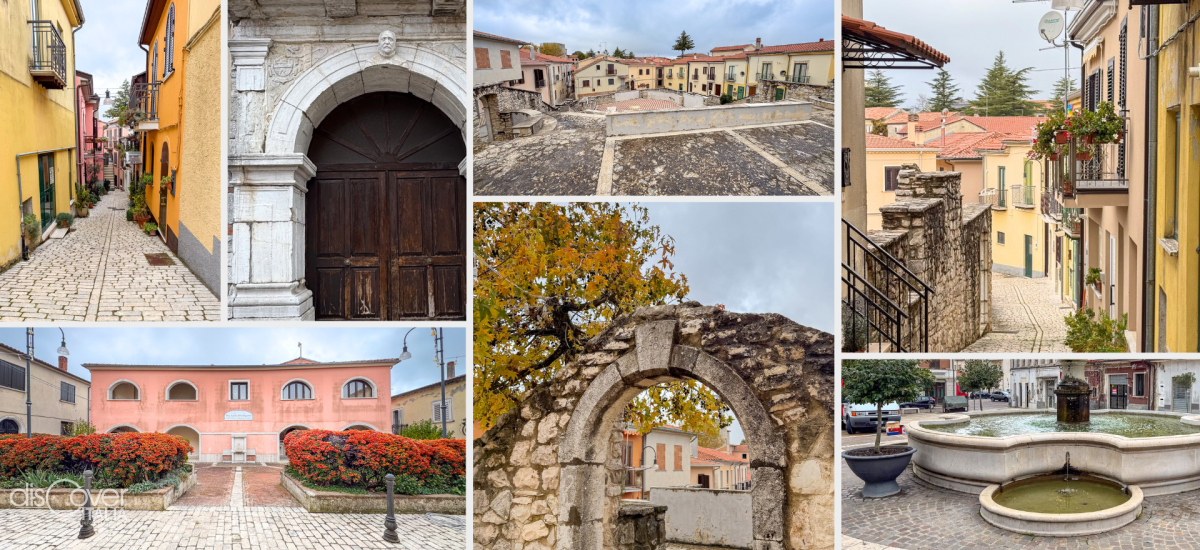
The mighty Castello degli Imperiale or Imperiali has dominated the village since the 9th century, built for defensive purposes on the top of the hill, to guard the northern border between the Principalities of Benevento and Salerno. The Lombard fortress was enlarged by the Normans, who incorporated the original structure into the new one. A further transformation took place in the 18th century, by the new lords, the Imperial princes of Genoa, who were interested in converting the fortress into a prestigious residence. The intended use of the castle changed again after the unification of Italy, when in 1862 the court and prison were allocated there. The rearrangement, after the last earthquake in 1980, involved the consolidation of the vaults and attics. Carefully restored, today it houses, on the first floor, the Museo dell'Opera, with all the ancient finds recovered in the cathedral of Sant'Antonino which initially stood 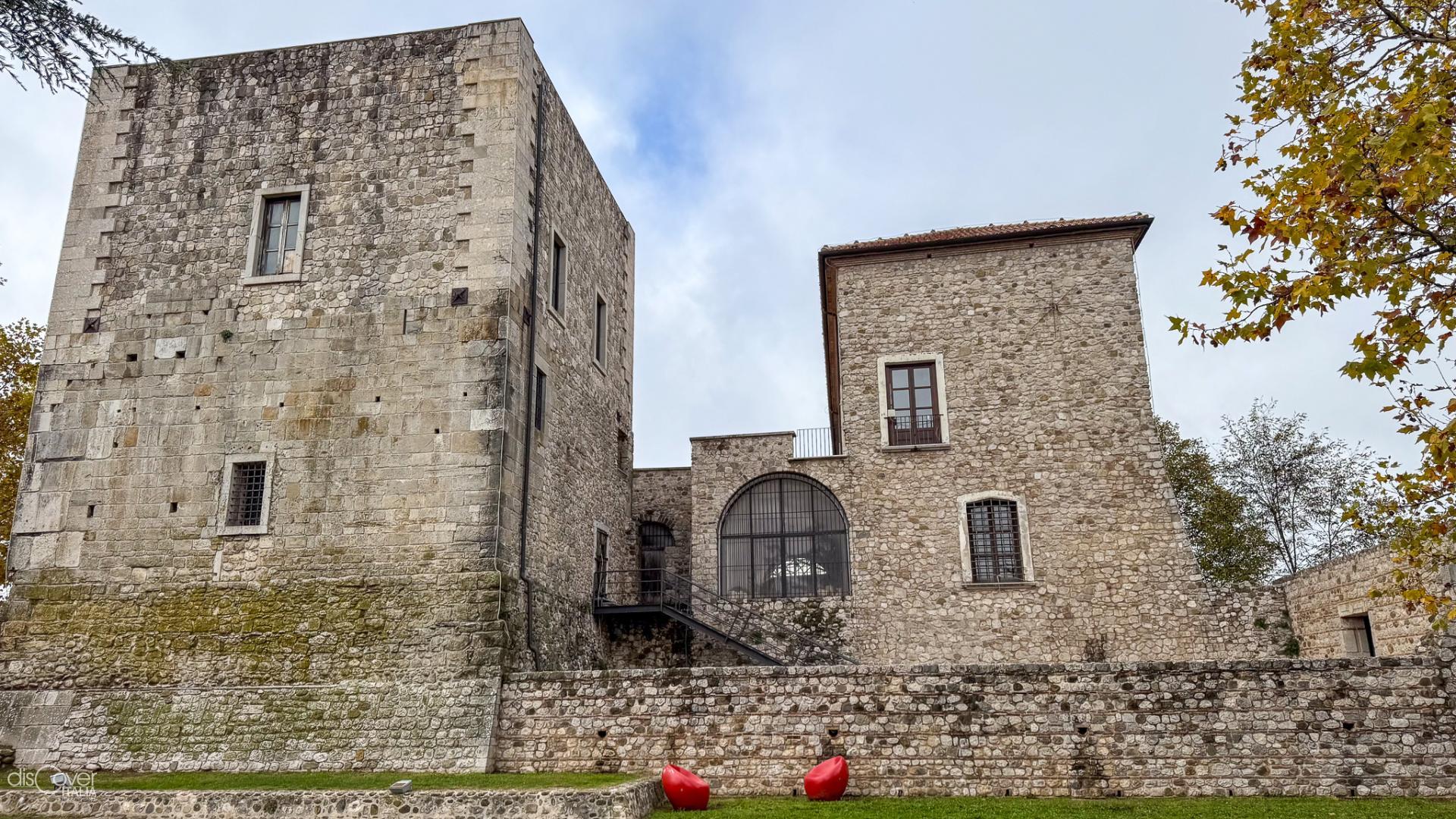 Another monument not to be missed is the Cathedral of Sant'Antonino martire, founded in the Norman era in 1076, when the diocese of Sant'Angelo was created under Pope Gregory VII, but heavily remodeled in the 16th century, according to the style in vogue at the time. Heavily damaged in 1980, it remained closed for worship for twenty years, to be reopened as the Cathedral of the Archdiocese of Sant'Angelo dei Lombardi-Conza-Nusco-Bisaccia. The Renaissance facade stands out with a portal in local stone and travertine with a round arch from 1734, dominated by three Norman statues, interspersed with artistic amphorae, depicting the Risen Christ, the Archangel Michael and Sant'Antonino.
Another monument not to be missed is the Cathedral of Sant'Antonino martire, founded in the Norman era in 1076, when the diocese of Sant'Angelo was created under Pope Gregory VII, but heavily remodeled in the 16th century, according to the style in vogue at the time. Heavily damaged in 1980, it remained closed for worship for twenty years, to be reopened as the Cathedral of the Archdiocese of Sant'Angelo dei Lombardi-Conza-Nusco-Bisaccia. The Renaissance facade stands out with a portal in local stone and travertine with a round arch from 1734, dominated by three Norman statues, interspersed with artistic amphorae, depicting the Risen Christ, the Archangel Michael and Sant'Antonino.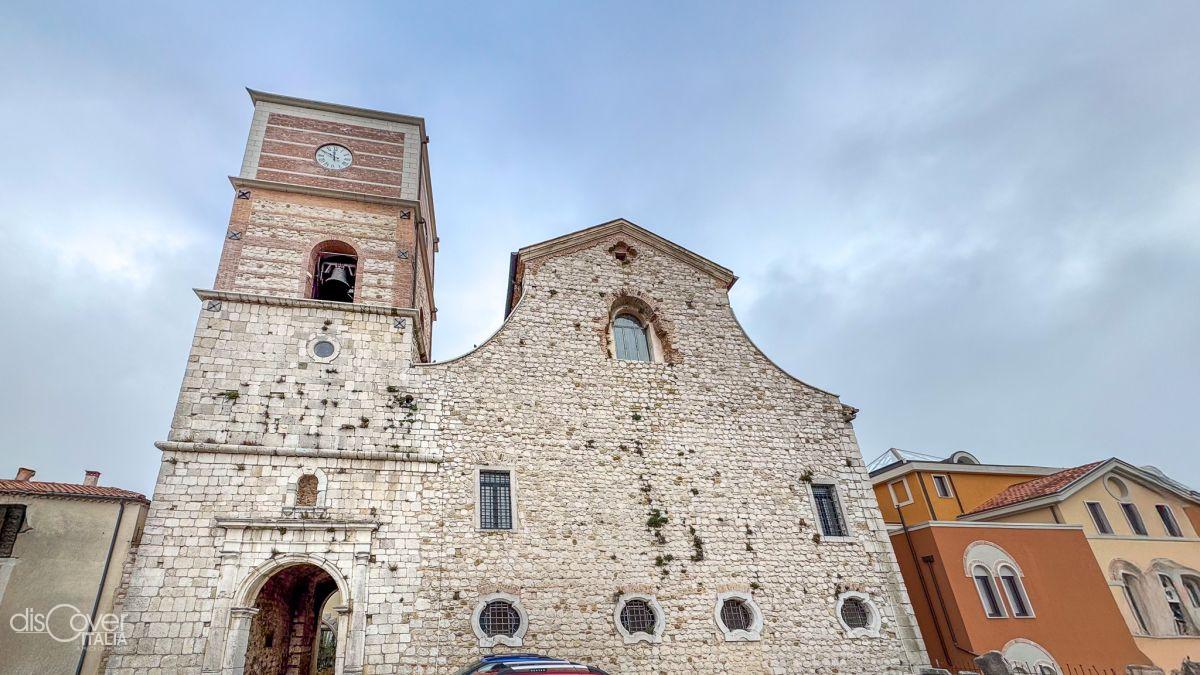 The sacred building has a Latin plan, with three naves, divided by pillars with highly decorated capitals, which support the barrel vault. In the transept there are two altars: a neoclassical one from the Goleto abbey and a stucco one. In the apse rebuilt after the earthquake, there is an altar and a beautiful sixteenth-century wooden Crucifix, also from the Goleto abbey, below which is an eighteenth-century wooden choir. The church is presented in the Baroque style, according to the reconstruction promoted by Bishop Tommaso De Rosa after the earthquake of 1694. The statues of Sant'Antonino, San Francesco di Paola, Santa Lucia are kept there (by the Baroque sculptor, Pietro Nittoli, native of the nearby Lioni), and a Santa Maria Immacolata in polychrome wood in the side naves. To the right of the entrance is the funeral monument with a valuable tombstone of Bishop Nicola Cecere, which his son Donato wanted to build in his honour. Of considerable value, the paintings depicting the Madonna di Montevergine by Angelo Michele Ricciardi and a Christ theRedeemer by Domenico Antonio Vaccaro. Next to the cathedral rises the bell tower, with a square base, mutilated by the earthquake.
The sacred building has a Latin plan, with three naves, divided by pillars with highly decorated capitals, which support the barrel vault. In the transept there are two altars: a neoclassical one from the Goleto abbey and a stucco one. In the apse rebuilt after the earthquake, there is an altar and a beautiful sixteenth-century wooden Crucifix, also from the Goleto abbey, below which is an eighteenth-century wooden choir. The church is presented in the Baroque style, according to the reconstruction promoted by Bishop Tommaso De Rosa after the earthquake of 1694. The statues of Sant'Antonino, San Francesco di Paola, Santa Lucia are kept there (by the Baroque sculptor, Pietro Nittoli, native of the nearby Lioni), and a Santa Maria Immacolata in polychrome wood in the side naves. To the right of the entrance is the funeral monument with a valuable tombstone of Bishop Nicola Cecere, which his son Donato wanted to build in his honour. Of considerable value, the paintings depicting the Madonna di Montevergine by Angelo Michele Ricciardi and a Christ theRedeemer by Domenico Antonio Vaccaro. Next to the cathedral rises the bell tower, with a square base, mutilated by the earthquake.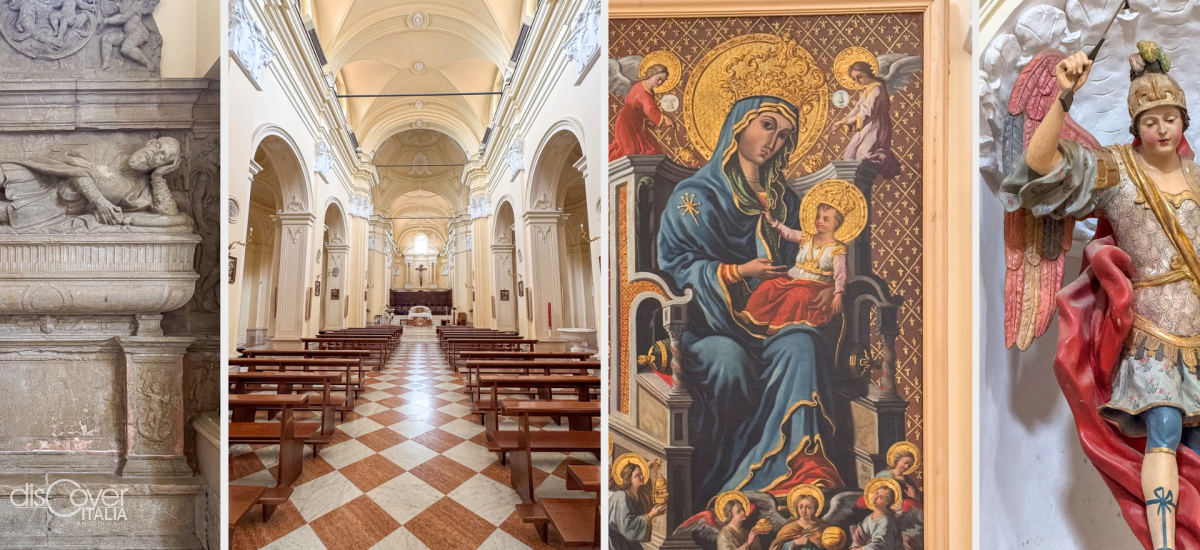
 Of notable interest is also the Church of the Franciscan convent of San Marco, dating back to 1274, but then rebuilt several times with original materials. The portal is in Renaissance stone and bears a Clement XIV coat of arms and a beautiful stone tondo of the Virgin and Child. Great devotion is directed to the statue of Sant'Antonio da Padova. Altar in polychrome marble of the thirteenth century. On the walls of the convent there are ancient architectural pieces and sarcophagi of illustrious sixteenth-century citizens. With the suppression of religious orders in the Napoleonic era, the convent became a French barracks, town hall, school and infantry barracks.
Of notable interest is also the Church of the Franciscan convent of San Marco, dating back to 1274, but then rebuilt several times with original materials. The portal is in Renaissance stone and bears a Clement XIV coat of arms and a beautiful stone tondo of the Virgin and Child. Great devotion is directed to the statue of Sant'Antonio da Padova. Altar in polychrome marble of the thirteenth century. On the walls of the convent there are ancient architectural pieces and sarcophagi of illustrious sixteenth-century citizens. With the suppression of religious orders in the Napoleonic era, the convent became a French barracks, town hall, school and infantry barracks.
In the surroundings of the city there is no shortage of naturalistic attractions: first of all, the Ofanto river and then the Fredane, Bocca Nuova and Sant'Angelo streams, to which is added a famous sulfur spring in the locality of Selvaggio.
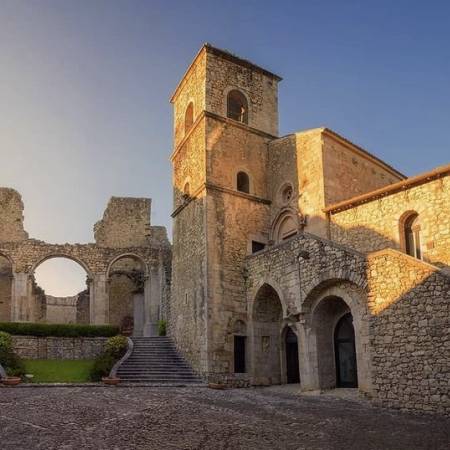
S. ANGELO DEI LOMBARDI - Goleto Abbey
It can be considered another chapter in the story begun in Montevergine by friar Guglielmo da Vercelli , patron saint of Irpinia.

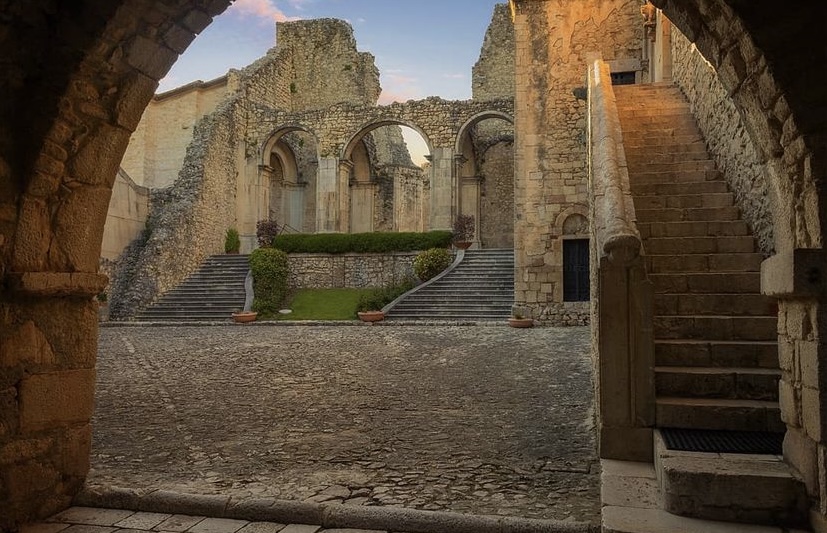


Comments powered by CComment